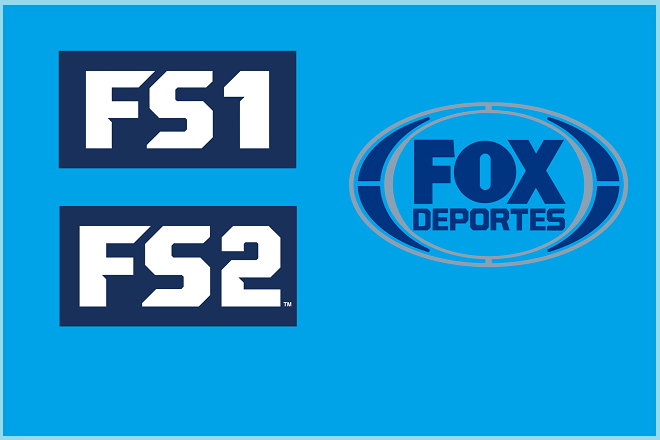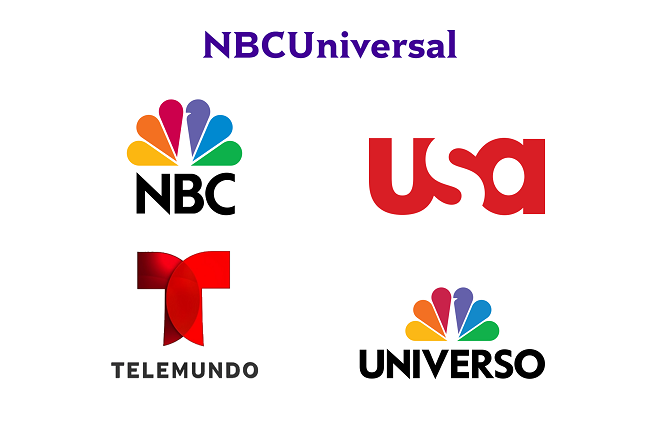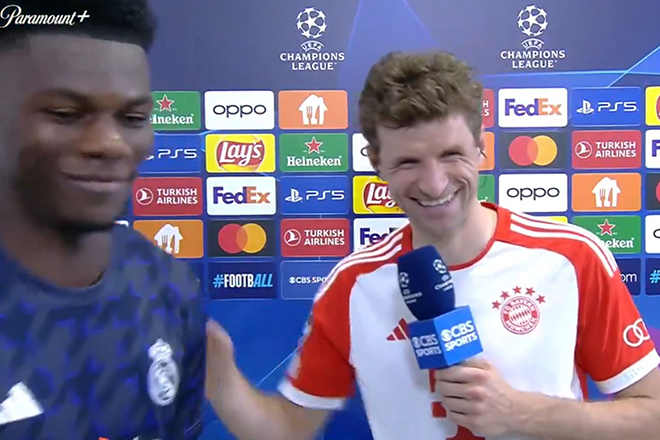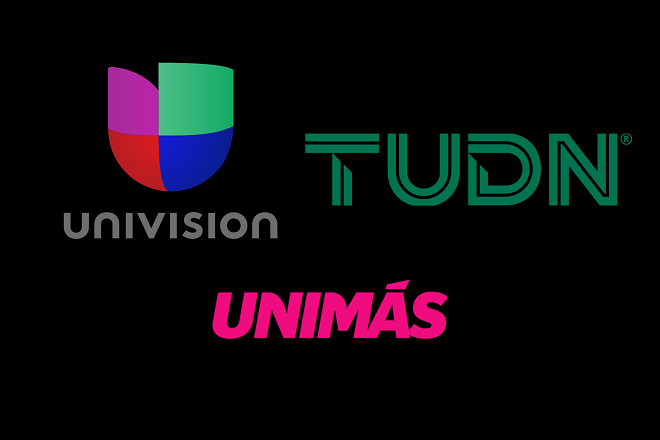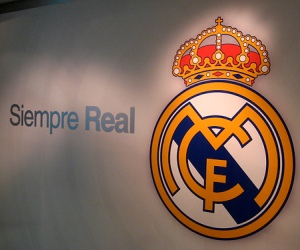 Real Madrid's History: The Early Years
Real Madrid's History: The Early Years
Seeking a release from their academic endeavors, students and professors of Madrid’s Institución Libre de Enseñanza, an organization dedicated to the defense of educational freedom, started up a football team in 1897. They called it “Foot-Ball Club Sky.”
The Sky club didn’t last long, however. In 1900, the club split into two: “New Foot-Ball de Madrid,” and “Club Español de Madrid.” Español’s first president was a gentleman named Juan Palacios. In 1902 Palacios and others split off from Español to form “Sociedad Madrid FC.” The new club’s official date of founding was March 6, 1902. It is better known today as Real Madrid.

Two early and powerful figures in the Madrid football club were the Padros brothers, Juan and Carlos. Ironically, in light of the future development of Madrid’s great rivalry with FC Barcelona, the Padros were of Catalan descent.
Juan Padros became Madrid FC’s first president on the day of the club’s founding. He and the club directors selected the club’s colors, designed to replicate those of Corinthians of London: White shirt and shorts. The original shirt had a blue diagonal stripe which was later dropped, although, to this day, the club’s crest maintains the blue stripe in recognition of the original colors. The socks were blue, as was the cap.
(Yes, in those days clubs issued caps as part of their uniform. So, too, did national teams when they began to develop, and this is why players who are selected to play for their country are said to be “capped.”)
In 1904 Juan Padros was succeeded to the presidency by his brother Carlos, under whose guidance Madrid FC realized their first period of success, winning the Spanish Cup four consecutive times from 1905 through 1908. In those pre-football league days the Spanish Cup, better known to us as the Copa Del Rey, was a de facto Spanish championship. In 1920, King Alfonso XIII, who was apparently a fan, granted the club his patronage, and thus Madrid FC were given the right to the honorific “Real” meaning royal.
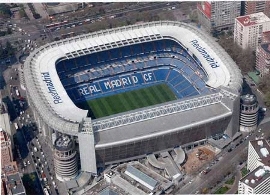 Real Madrid's History: The Influence of Santiago Bernabeu Yeste
Real Madrid's History: The Influence of Santiago Bernabeu Yeste
There were three Bernabeu brothers, Antonio, Marcelo and Santiago, who would all contribute in one way or another to the success of Real Madrid.
Yet it was Santiago’s influence in particular that would shape the course of the club’s development. Such was the magnitude of Santiago’s influence over the decades that the club’s great stadium, “The Bernabeu,” was named for him.
Santiago Bernabeu Yeste made his debut as a player for Madrid in 1912. He was just 16 years of age, yet he scored the winning goal in Madrid’s 2-1 victory against their opponents of the day, the “English Sports Club.” Despite leaving Madrid for Atletico for a year, Bernabeu Yeste later returned to Real and went on to become coach, then a director of the club and, in 1945, its president.
Under Bernabeu Yeste, Real Madrid established a strategy of seeking the finest players from around the world. The strategy was a success and led to a period of unprecedented achievement in the ‘50’s and ‘60’s. The Real Madrid team of that period was led by a young Argentine striker of prodigious talent. His nickname was “Saeta Rubia,” the Blond Arrow, and he is often considered as the greatest football player of all time.
Real Madrid's History: The Era of Di Stefano
Alfredo Di Stefano hailed from Barracas, a district of Buenos Aires. He was acquired by Real Madrid under controversial circumstances. Both Real and their great rivals, FC Barcelona, sought to bring the Blond Arrow to Spain in 1953.
Di Stefano, on the books with the Buenos Aires club River Plate, was playing in Colombia for Millionarios at the time due to a player’s strike in Argentina. A protracted and convoluted deal was made involving the Colombian and Argentine clubs, as well as Real Madrid, Barcelona and the Spanish Football Federation. FIFA, the governing body of international football, sanctioned the transfer and Di Stefano initially signed with FC Barcelona.
But the Spanish Federation refused to allow the transfer, and simultaneously banned the entry of foreign players into Spain. During negotiations over Di Stefano, Santiago Bernabeu apparently got hold of the young Argentine’s ear and signed him for Real Madrid.
There was uproar, of course, yet FIFA refused to take sides over Di Stefano and told the Spanish Federation that the player’s transfer was their problem to solve. In a decision worthy of Solomon, the Spanish Federation thereupon decreed that Di Stefano would be allowed four years in Spanish football, two for Barcelona and two for Real Madrid.
In protest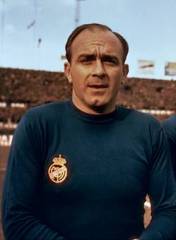 Barcelona backed out of the agreement and Di Stefano became a full-time Real Madrid player. Di Stefano’s arrival heralded the start of Real Madrid’s metamorphosis from a powerful Spanish club to a European giant whose status influences the game to this day.
Barcelona backed out of the agreement and Di Stefano became a full-time Real Madrid player. Di Stefano’s arrival heralded the start of Real Madrid’s metamorphosis from a powerful Spanish club to a European giant whose status influences the game to this day.
With Di Stefano in the side, Real Madrid won the league in 1954. It was their first championship in 21 years. They won it again in 1955. Di Stefano also led the side that won the inaugural European Cup in 1956, and went on to win the next four European championships.
Joined by the likes of Raymond Kopa, Francisco Gento, Joseito, and of course the great Hungarian Ferenc Puskas, Real Madrid was a nearly unbeatable side. Despite his obvious influence on the club’s fortunes, Di Stefano’s departure in 1964 was a bitter one as he fell out with coach Miguel Munoz. Santiago Bernabeu took the latter’s side in the dispute and Di Stefano signed for Español shortly after.
Di Stefano would later return to Real and would manage the club on two separate occasions, and his name will always be linked with Madrid football. In 2000 he was named Real Madrid’s honorary President for life.
Real Madrid's History: The Era of the Vulture
As manager, it was Di Stefano who ushered in another notable period of success that began in the mid-1980’s when he brought Emilio Butragueno into the first team. Butragueno was an instant sensation, scoring two goals on his debut.
Known as El Biutre, The Vulture, a play on his surname, Butragueno along with Manuel Sanchez, Martin Vazquez, Miguel Pardeza and Michel, led the Whites to 5 Spanish titles in a row, two UEFA Cups, a Copa del Rey and three Spanish Super Cups. The great Mexican player Hugo Sanchez became a member of that same side, the nucleus of which was La Quinta del Biutre, The Vulture’s Cohort.
Real Madrid's History: Los Galacticos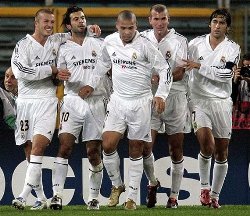
In 2000 the flamboyant and charismatic Florentino Perez took over the presidency of Real Madrid. The era of Los Galacticos was borne out of Perez’s philosophy of big money spending on big name players in expectation of big time results.
Portuguese superstar Luis Figo was the first signing of the Galacticos era and in terms of the enmity his signing created, he is certainly the most spectacular purchase. Figo at the time was the toast of Barcelona, for whom he had played since 1995.
His move to Real Madrid was seen by Catalans as a betrayal and they have never let him forget it. His returns to the Camp Nou were greeted with vitriol and missiles, the most extravagant being the pig’s head tossed at him in 2002.
Superstars such as Zinedine Zidane, David Beckham, Ronaldo, Roberto Carlos, and others populated the Galacticos squad, yet for the money that was spent one could argue that the team failed to live up to the hype.
Perez was forced out of the club presidency but only temporarily, and since his return The Galacticos concept has continued with the signings of a new cadre of superstars such as the Brazilian midfielder Kaka, talented French striker Karim Benzema, and the flashy and enormously-talented Portuguese striker Cristiano Ronaldo. Club management has taken on a distinctly Galactico appearance too, since the signing of the moody, cerebral and talented, Jose Mourinho.
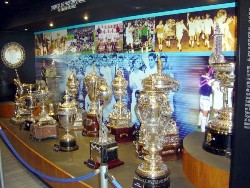 Real Madrid's History: Honors
Real Madrid's History: Honors
Real Madrid is considered the most successful side in Spanish football, with 31 Spanish championships, 17 Spanish cup titles, 8 Spanish Super Cup titles and a League Cup. Perhaps the greatest feat of achievement in the history of the club was the five consecutive European Cup wins, beginning with the inaugural European Cup in the 1955-56 season, through to their fifth title in the 1959-60 season.
In total Real Madrid has won the European Cup/Champions League a record 9 times. In 2000 FIFA officially declared Real Madrid the greatest football team of the 20th Century.
And yet, great though Real Madrid’s record in domestic and European competition may be, no campaign can be considered truly successful unless they have beaten their nemesis, the other giant of Spanish football, FC Barcelona.
It is one of the great rivalries in sport, with passions fueled by cultural and political divisions as well as the straightforward sporting desire to be the best. When these two clubs meet the spectacle is known simply as “El Clasico.”
To read more about FC Barcelona click here.
To read more about Barcelona and Real Madrid's history in El Clasico click here.

